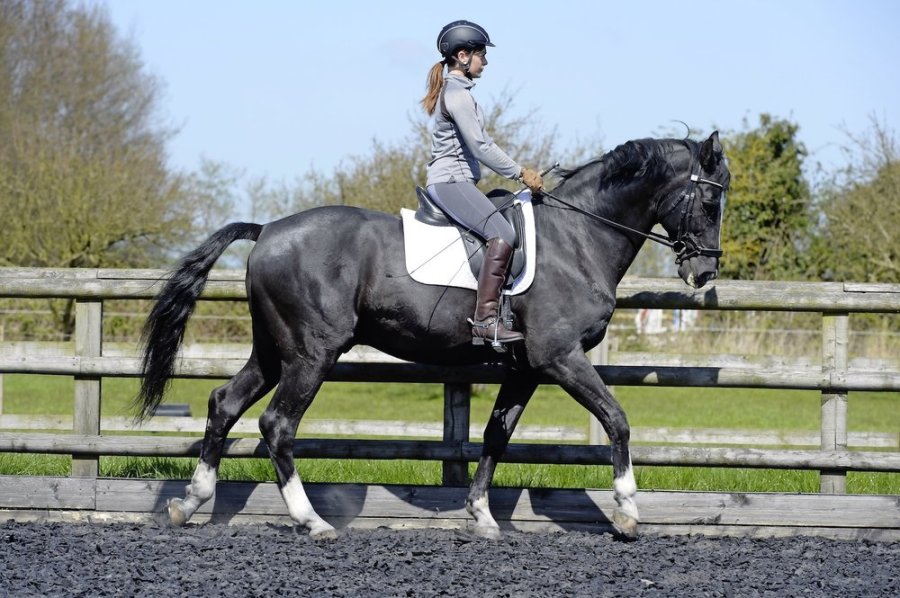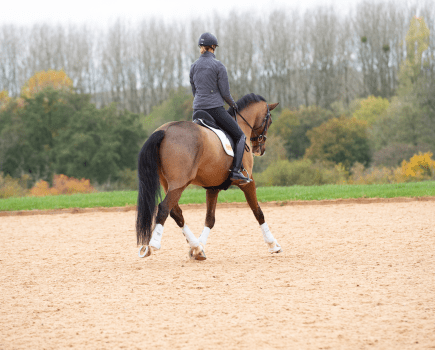Practising your walk to canter transition is a good all-round strengthening exercise for your horse – and a required movement in some dressage tests – so it’s important to get it right. When ridden correctly this transition teaches your horse to sit and push from his hindquarters, encouraging him to lighten his forehand and take more weight behind.
How to ride it
Eventually you’ll need to be able to ride this transition on a straight line, but to begin with it’s easier to ask for it on a 20m circle. This is because your horse will already be positioned with a bend to the inside, which will help you achieve a clean strike off.
Preparation is key and you need your horse to be walking on a contact. Before you ask for the transition, collect the walk a little by using your fingers on the reins to ask your horse to slow down. At the same time, use your legs to ask him to keep moving forwards. Your canter aids have to be really clear, so your horse understands what you’re asking him to do. Your inside leg needs to stay at the girth and the whole of your outside leg from your hip should be stretched backwards and down. (Don’t simply move your lower leg backwards, as this will alter your position in the saddle.) Ask for canter by squeezing with your inside leg and pressing your outside leg onto your horse’s side.
When you’re teaching your horse, don’t worry if you get a few steps of trot before cantering. What’s important is that he stays connected and forwards in the transition.
Usually, once you’ve ridden a few transitions, most horses will get the idea and make the direct transition from walk to canter with ease.
Quick and easy problem solver
If your horse is over-reactive to your aids he may become tense and tight during the walk to canter transition. He must learn to accept your leg aids, so prepare him by gently laying your legs on his sides before applying the aids for canter, so it doesn’t surprise him.
If he’s not reactive to your aids, it’s important that you don’t use your upper body to help with the transition to canter. If you don’t maintain a correct position and contact, your horse will be more likely to break into trot. Carrying a dressage whip in your outside hand so you can flick him with it to back up your leg during the transition can help. Make sure you use the whip right behind your outside leg to help your horse understand what you’re asking him to do.
Don’t miss the latest issue of Your Horse Magazine, jam-packed with training and veterinary advice, horse-care tips and the latest equestrian products available on shop shelves, on sale now.








